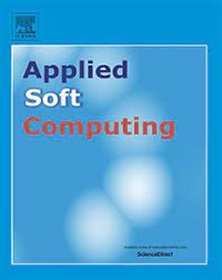Generative fuzzer-driven vulnerability detection in the Internet of Things networks
IF 7.2
1区 计算机科学
Q1 COMPUTER SCIENCE, ARTIFICIAL INTELLIGENCE
引用次数: 0
Abstract
The Internet of Things (IoT) paradigm has displayed tremendous growth in recent years, driving innovations such as Industry 4.0 and the creation of smart environments that enhance efficiency and asset management and enable intelligent decision-making. However, these benefits come with considerable cybersecurity risks due to inherent vulnerabilities within IoT ecosystems. Introducing potentially vulnerable IoT devices into secure environments, like smart airports, introduces new attack surfaces and vectors for exploitation. Identifying such vulnerabilities is challenging, and while traditional methods like penetration testing and vulnerability identification offer solutions, they often fall short due to IoT’s unique data diversity, hardware constraints, and complexity. We propose an intelligent mutation-based fuzzer for IoT vulnerability detection in networks to address these limitations, demonstrated through a smart airport case study. This method leverages Generative Adversarial Network (GAN)-based mutation, utilizing legitimate network communications (i.e., payloads) to produce fuzzed payloads that expose vulnerabilities. Additionally, we incorporate a large language model (LLM)-based risk assessment framework to evaluate the likelihood and impact of identified vulnerabilities, which is crucial for effectively prioritizing threats in interconnected IoT environments. This dual approach of vulnerability detection and LLM-driven risk assessment provides comprehensive insights into IoT security, enabling prioritized response actions. Experiments conducted in the UNSW Canberra IoT testbed confirm that our approach outperforms conventional vulnerability identification methods, offering a scalable solution for effective vulnerability detection and risk prioritization in complex IoT networks.

求助全文
约1分钟内获得全文
求助全文
来源期刊

Applied Soft Computing
工程技术-计算机:跨学科应用
CiteScore
15.80
自引率
6.90%
发文量
874
审稿时长
10.9 months
期刊介绍:
Applied Soft Computing is an international journal promoting an integrated view of soft computing to solve real life problems.The focus is to publish the highest quality research in application and convergence of the areas of Fuzzy Logic, Neural Networks, Evolutionary Computing, Rough Sets and other similar techniques to address real world complexities.
Applied Soft Computing is a rolling publication: articles are published as soon as the editor-in-chief has accepted them. Therefore, the web site will continuously be updated with new articles and the publication time will be short.
 求助内容:
求助内容: 应助结果提醒方式:
应助结果提醒方式:


